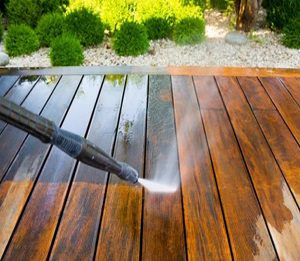
Causes Of Pressure Washer No Pressure Problem
There can be various issues behind this problem, but there is no need to worry as these problems can be easily found and solved. All you need is some inspection, and you can reach the root cause in no time. These are the leading causes of the no pressure problem.
Worn Nozzle
This is the most dominant cause of the no pressure problem in the pressure washer. Using a worn-out nozzle can cause a tremendous drop in pressure, and this can be fixed easily by changing the nozzle. Just make sure that you are replacing the nozzle with the correct size. Please do not choose the new nozzle on the basis of color but choose them based on the orifice size.
Belt Slippage
Belt slippage inside the pressure washer can also cause pressure loss. A belt connects the motor or engine with the pump that turns and creates pressure. A slipping belt does not effectively transmit the power to the pump, and the result is low pressure. Make sure to use the correct belt in the appropriate size.
Air Leakage
The air leakage in the pressure washer can also cause the problem. The problem might sound complicated, but with little effort, you can reach the source of the leak. All you need to do is disassemble the pressure washer and locate the leakage point. Then appropriately seal the source. Then reassemble the pressure washer. These tactics will mostly solve the problem of low pressure.
Relief Valve
A relief valve is in the spray gun of the pressure washer. Due to some technical error, it can get stuck or fail to open or close. You will need to examine closely to point out any malfunction in the relief valve. If the relief valve causes the issue, it is better to replace them because they are cheap, and repairing them decreases their integrity and durability.
Clogged Inlet Suction Strainer
The clogged inlet suction filter can also cause pressure loss in the pressure washer. Too much of the debris on the filter can block water transmission, which can result in low pressure. This can be solved easily by cleaning the suction strainer of the pressure washer. Choosing the inappropriate size inlet suction strainer may also cause a low-pressure problem because it may not allow the desired amount of water to the pump.
Inadequate Fluid Filtration
The pressure of the water coming out of the pressure washer may decrease noticeably if the fluid filtration packing and fitting are degraded or worn out. It can also be caused by extensive cavitation and air in the pumped fluid. Install the proper filter to counter the issue; the suction at the manifold should go more than 5 inches mercury vacuum.
Dirty Inlet Discharge Valves
Dirty discharge valves can also be the cause of the restricted flow of water in the pressure washer. If you want to avoid those issues, keep the pressure washer clean and free from dirt. Check the valve assemblies constantly to ensure maximum cleanliness.
Leaky Discharge Hose
Check for the leaky discharge hose that might be the cause of low pressure. Replace the discharge hose or if there are any repairable hoses, repair them. Make sure that you connect all the connections perfectly and double-check them before restarting the pressure washer.
Restricted Inlet
One of the leading causes of the low pressure in the pressure washer is the restricted inlet. If the water source can not provide the desired flow rate, it will result in air suction that decreases the pressure. Seek expert assistance to solve the matter in simple steps.
- 10 Best Budget Pressure Washer 2023 – Reviews & Buyer’s Guide - December 7, 2022
- 10 Best Pressure Washer for Cars Wash Reviews [2023] - December 6, 2022
- 10 Best Commercial Pressure Washer 2023 –Buyer’s Guide - December 5, 2022
